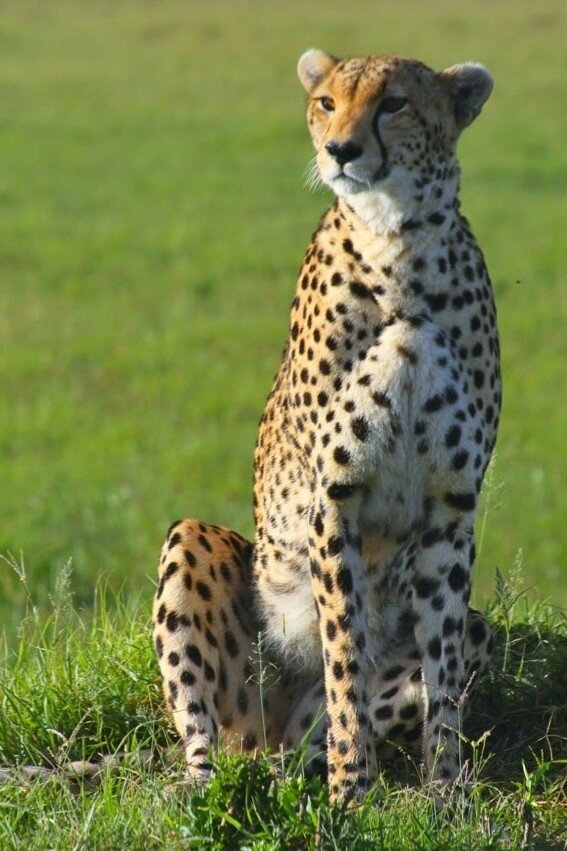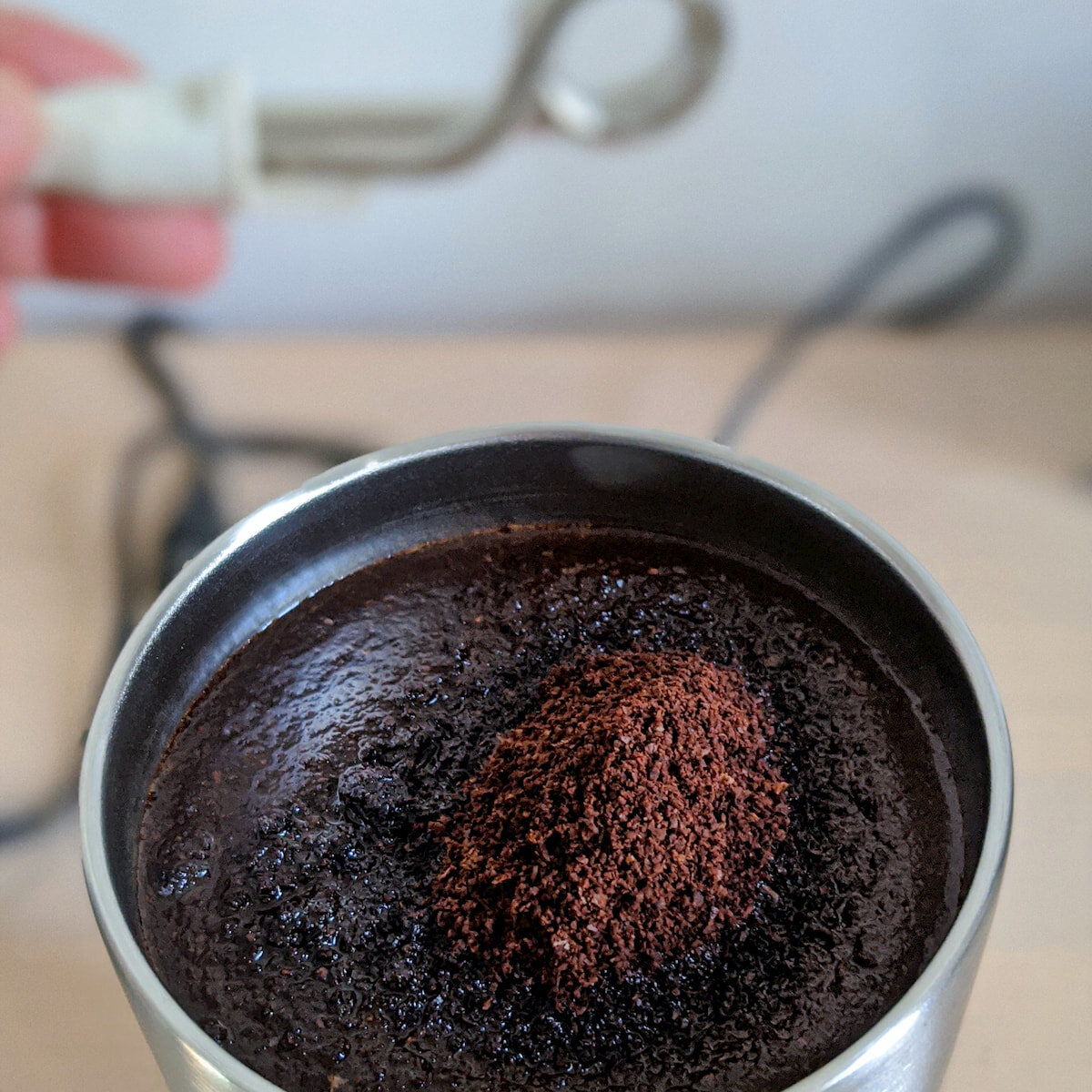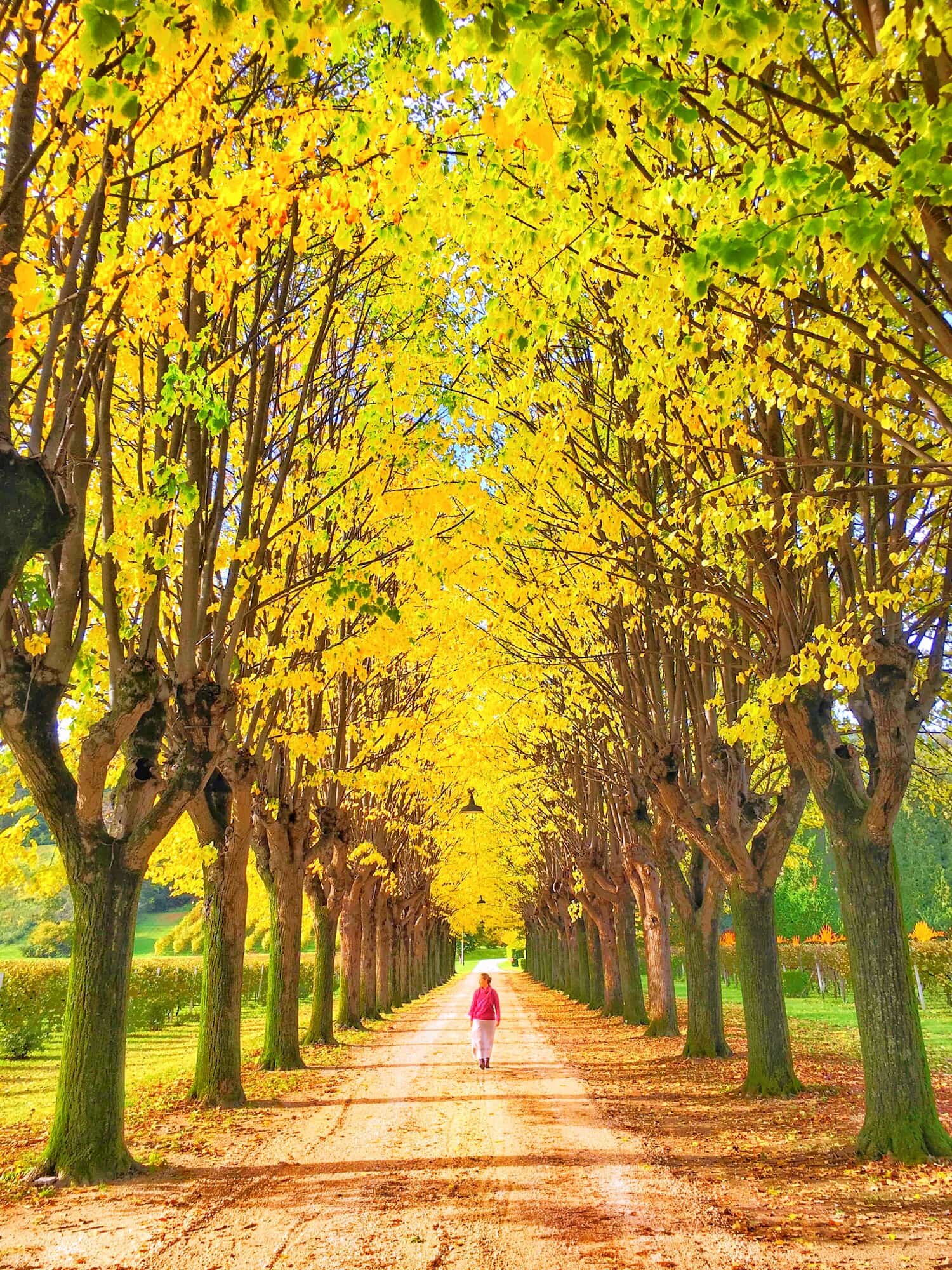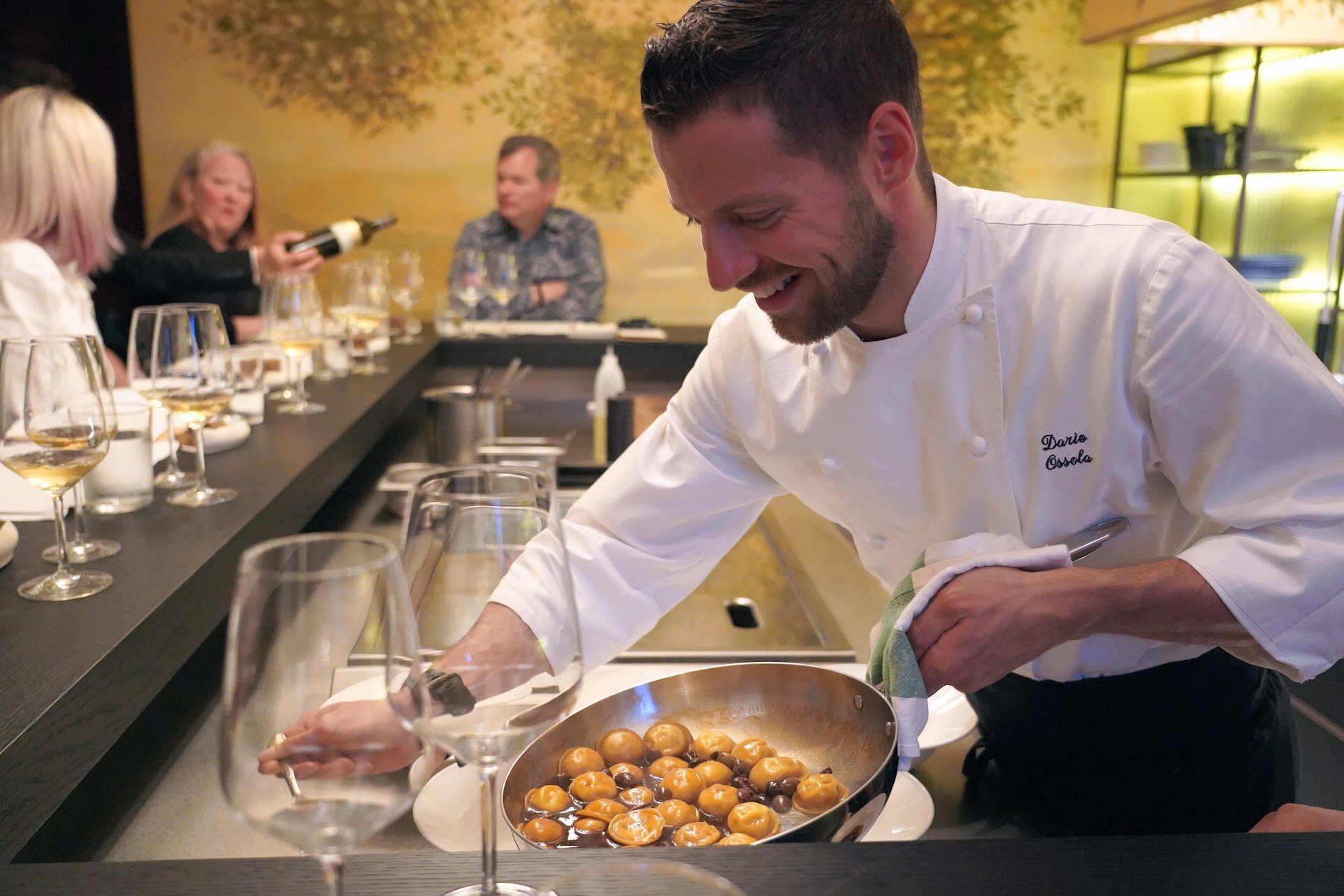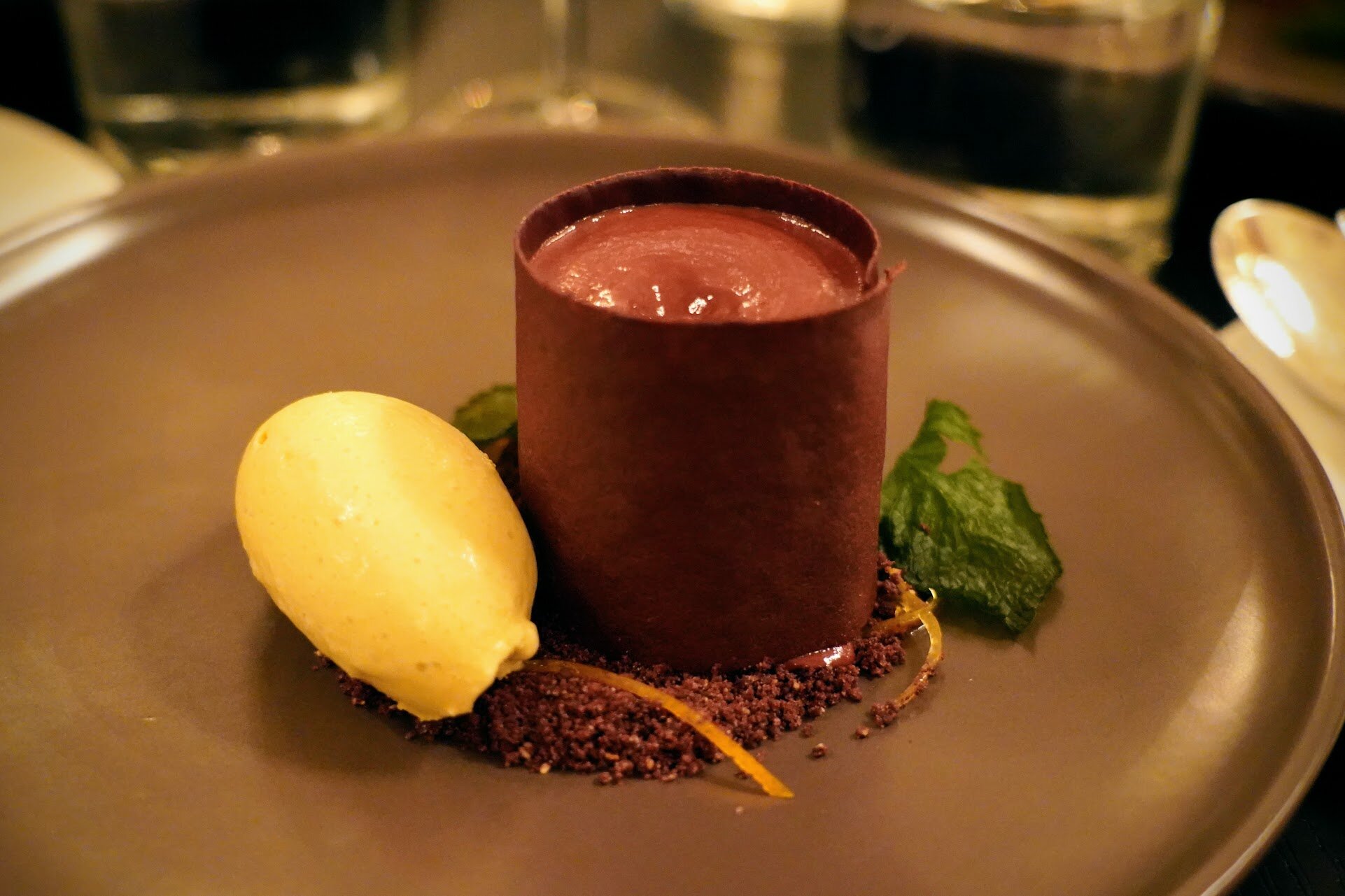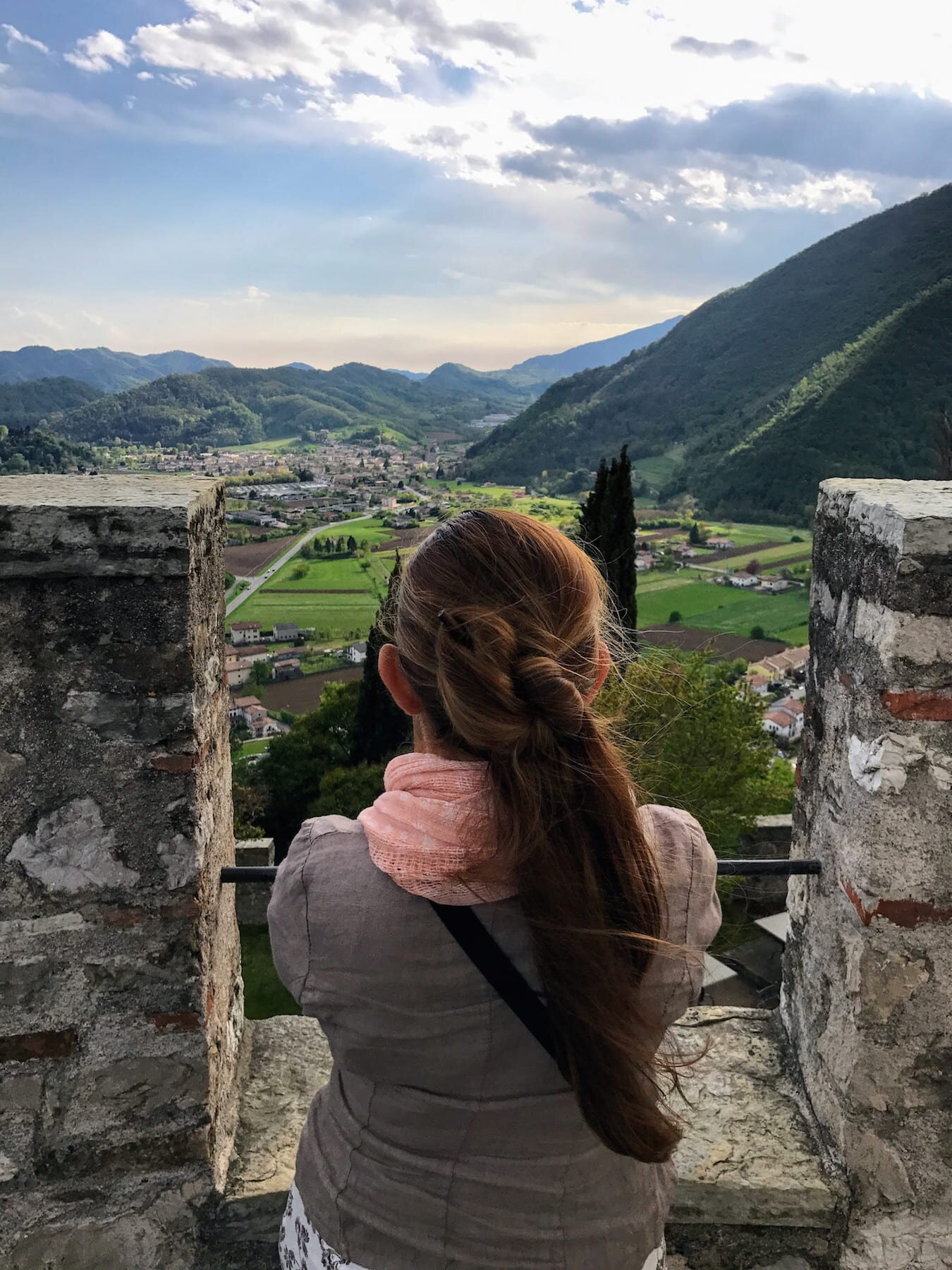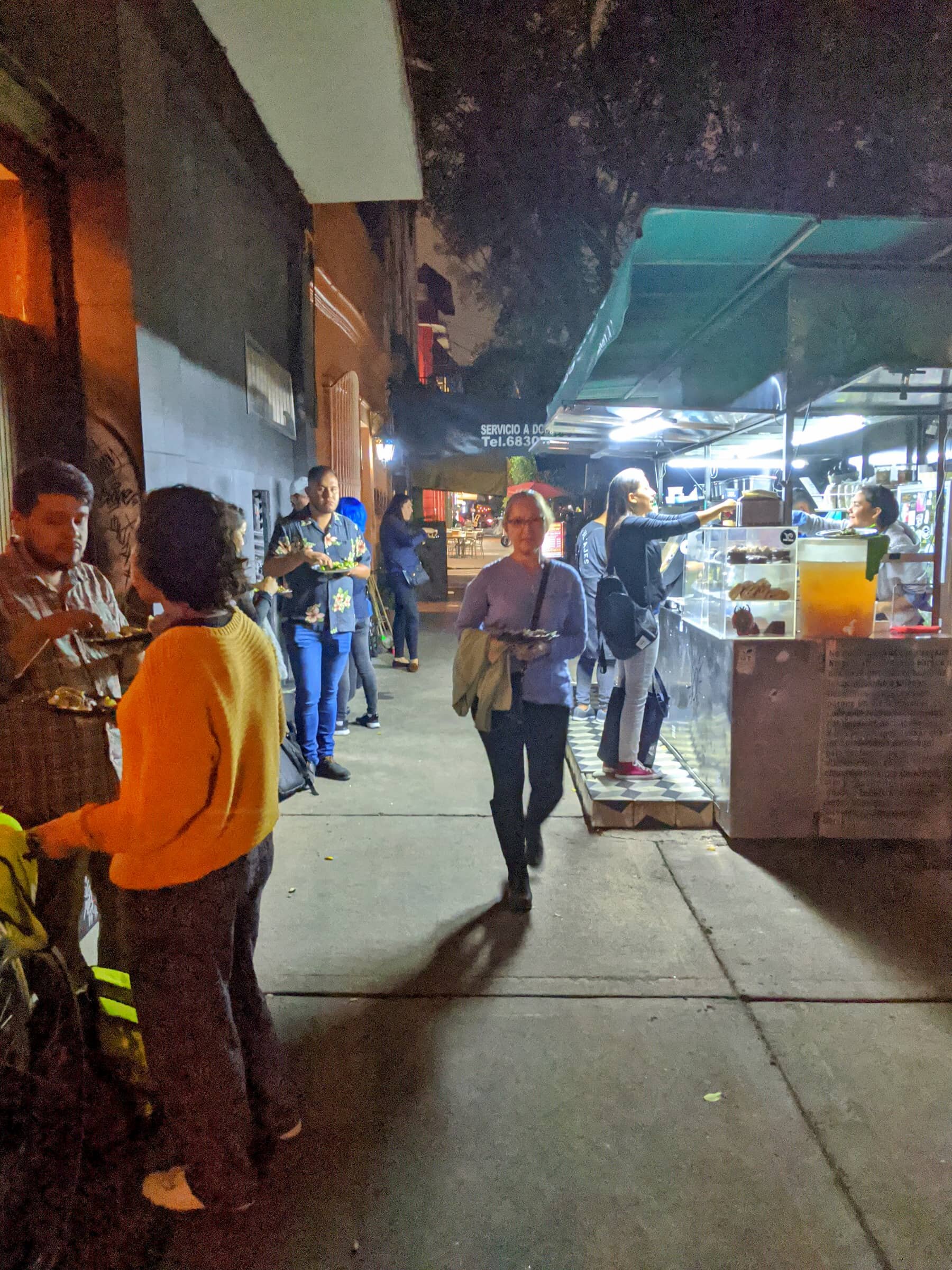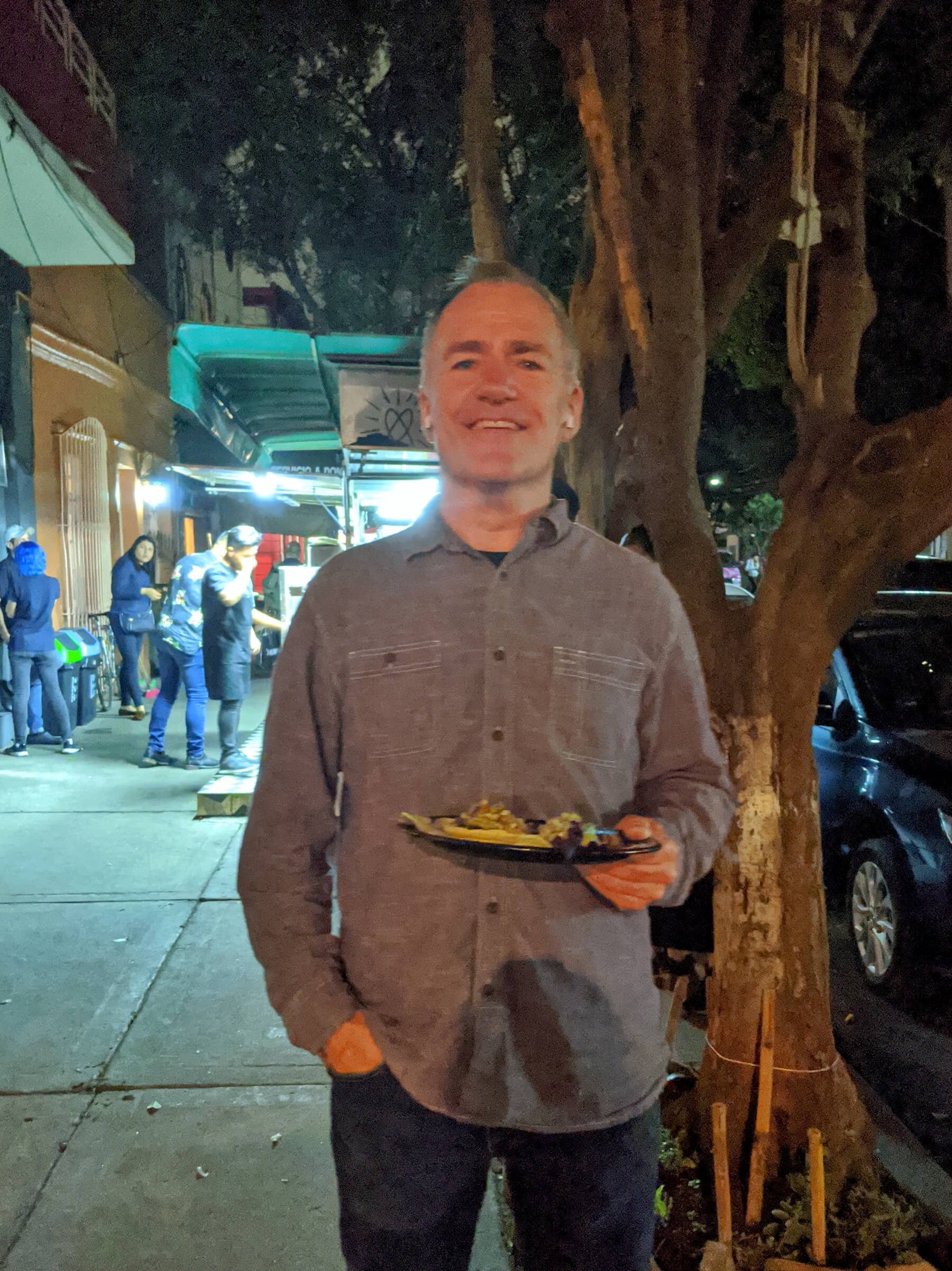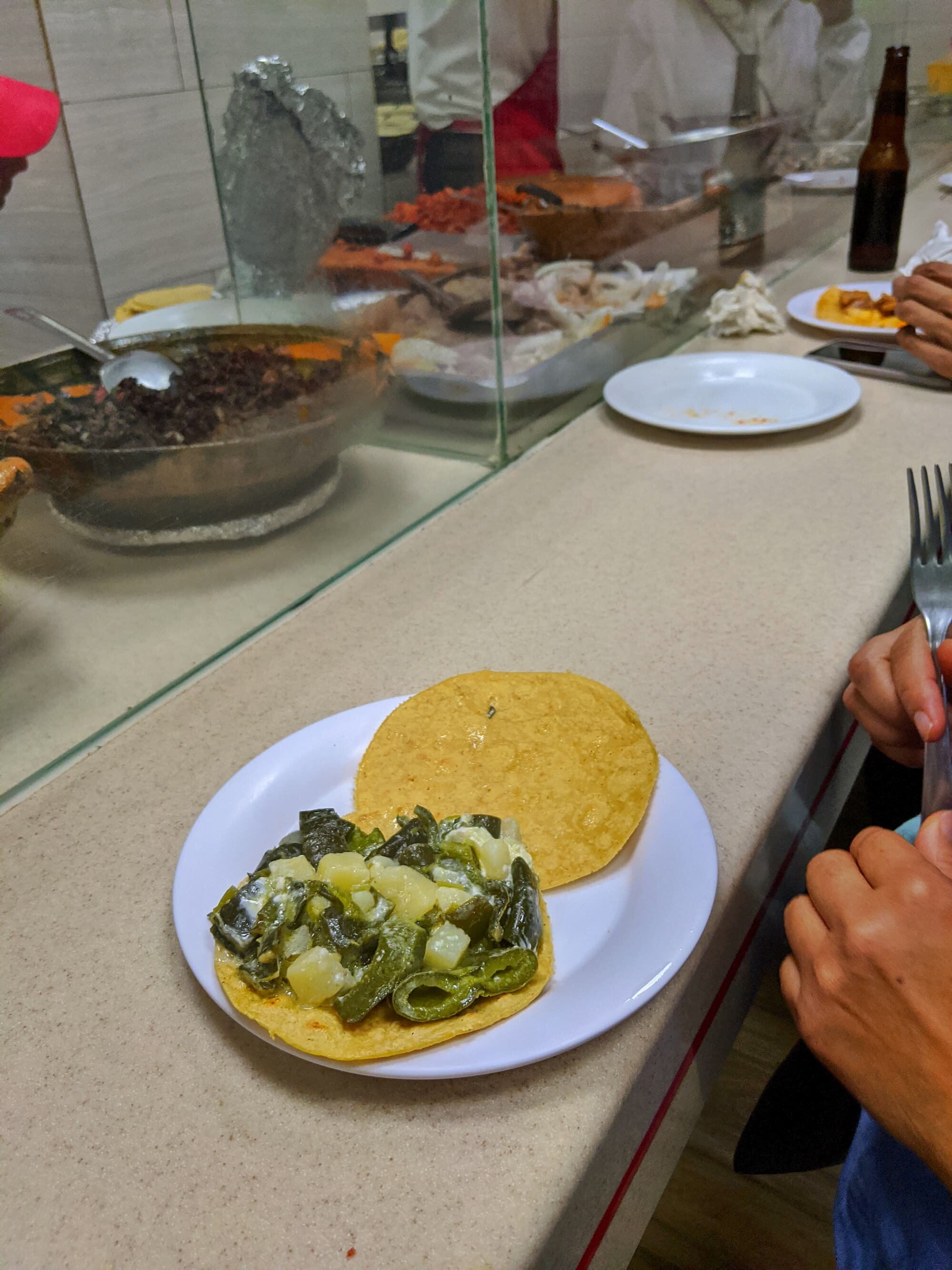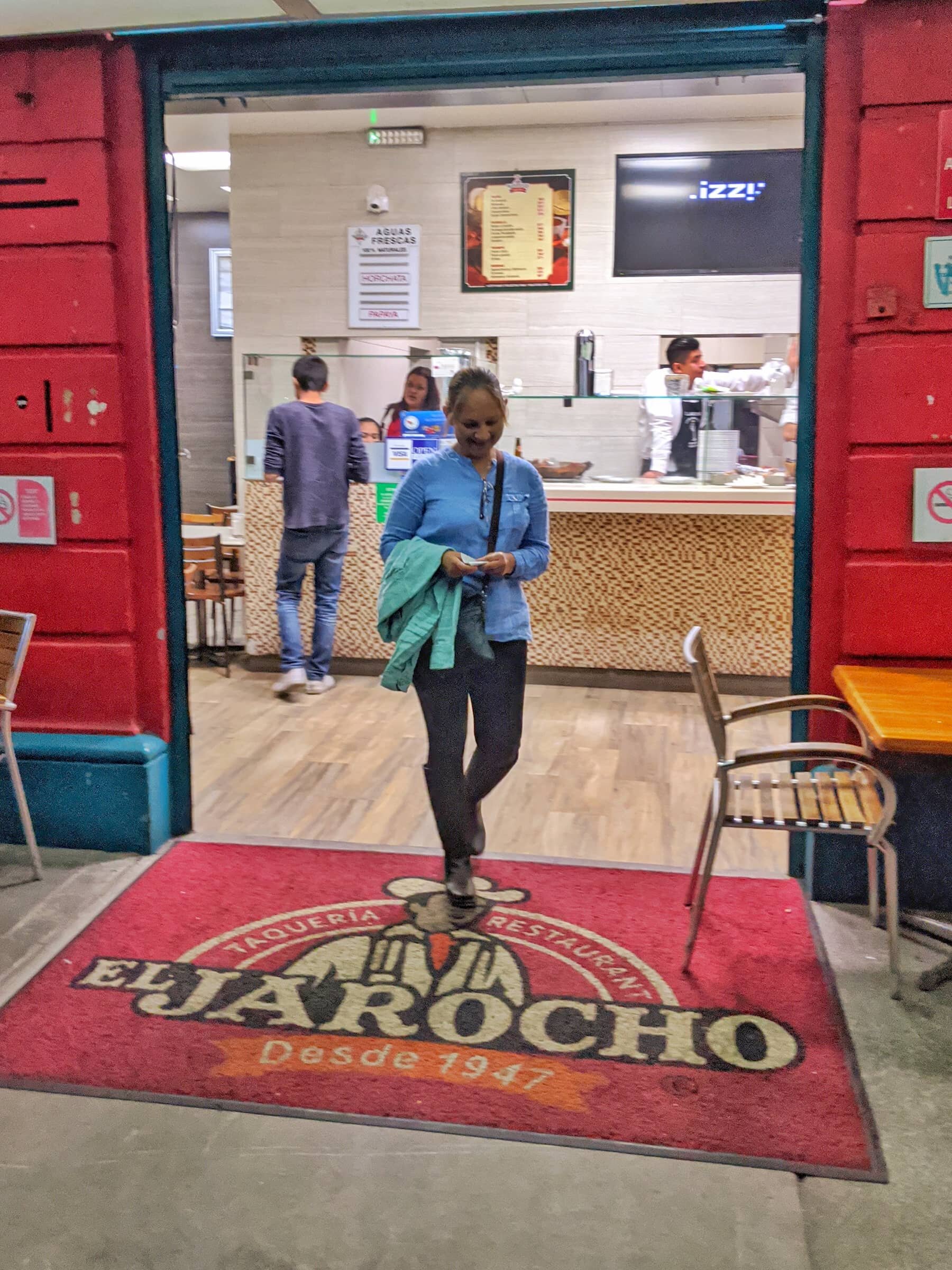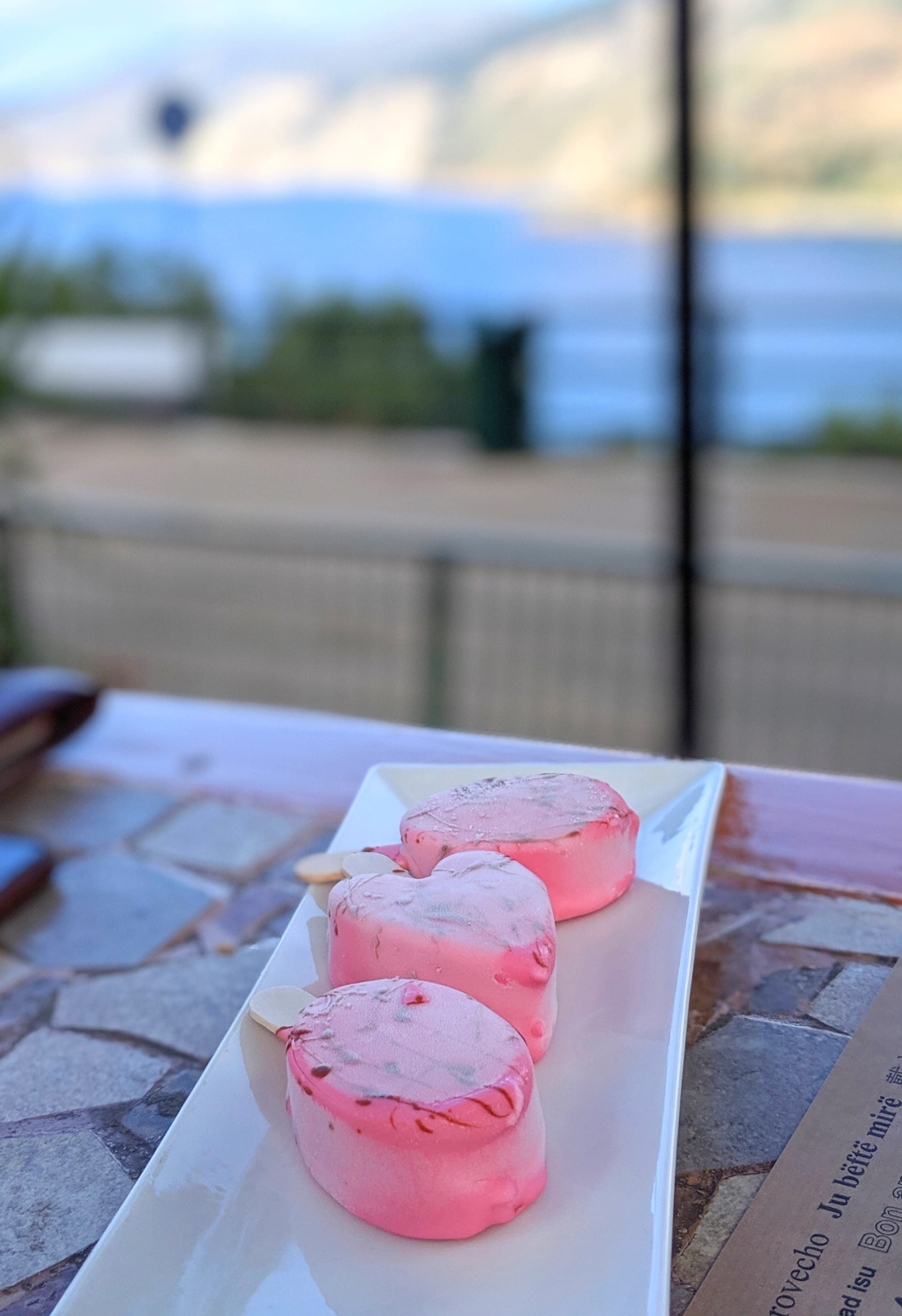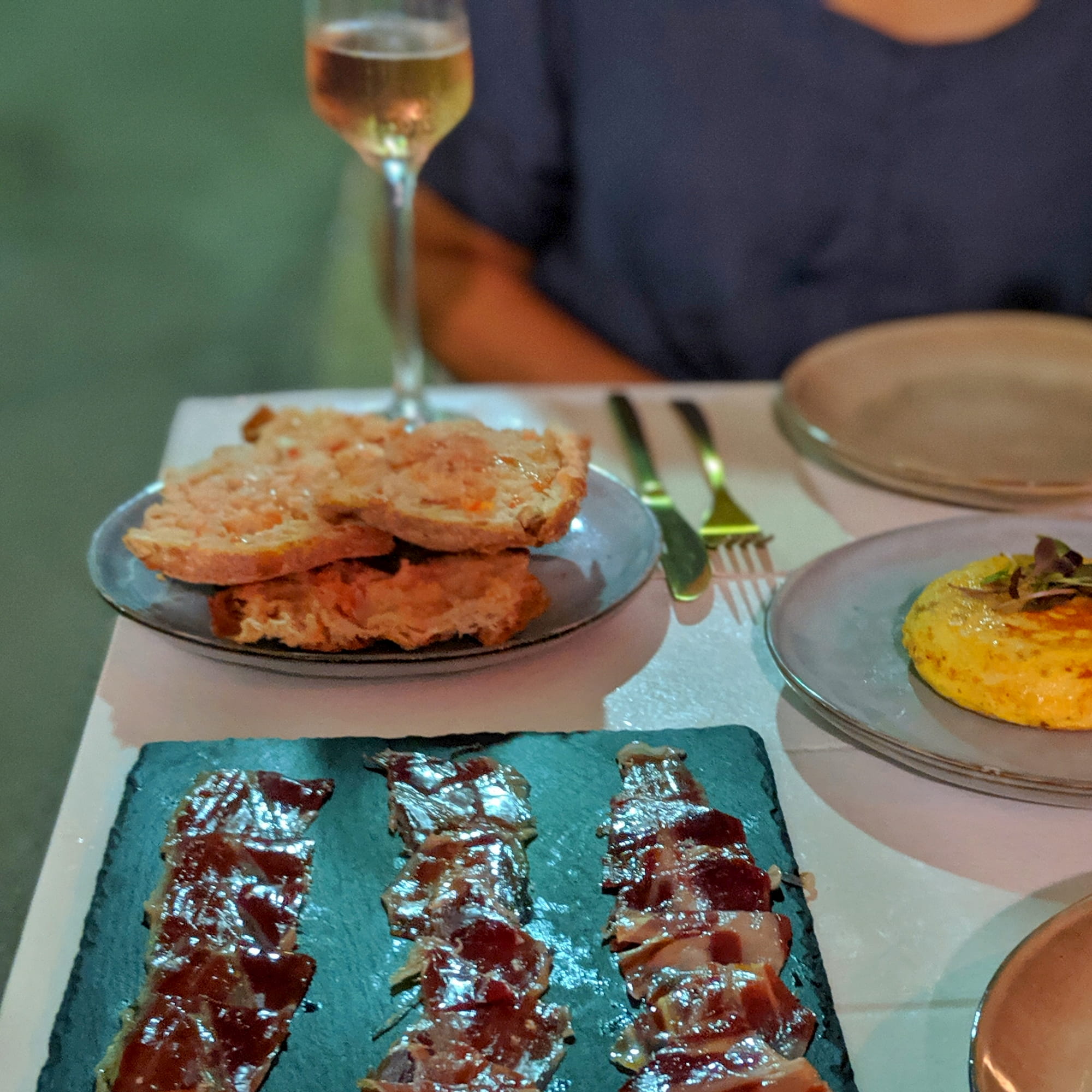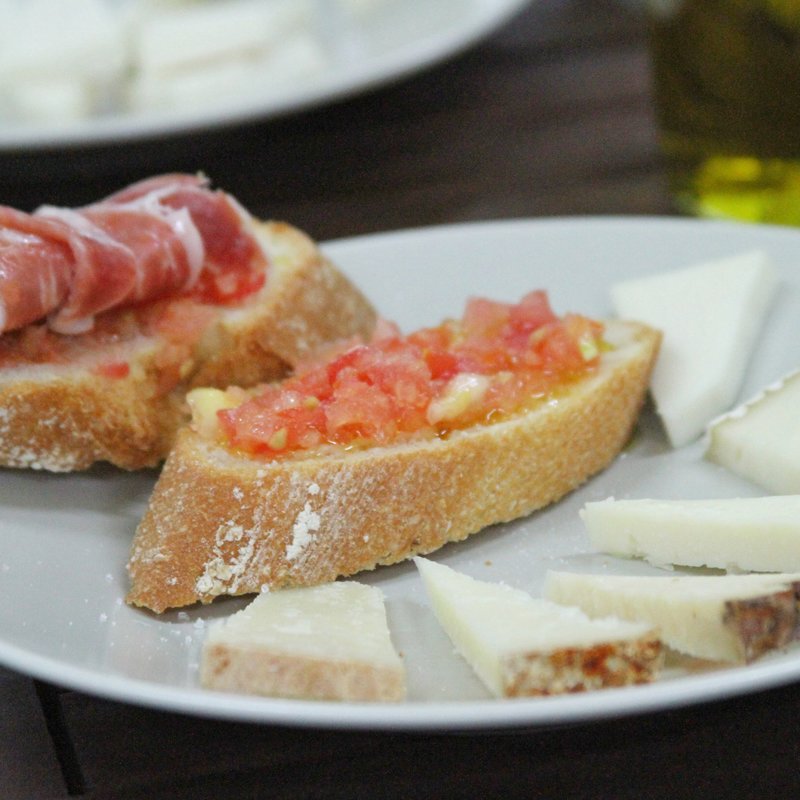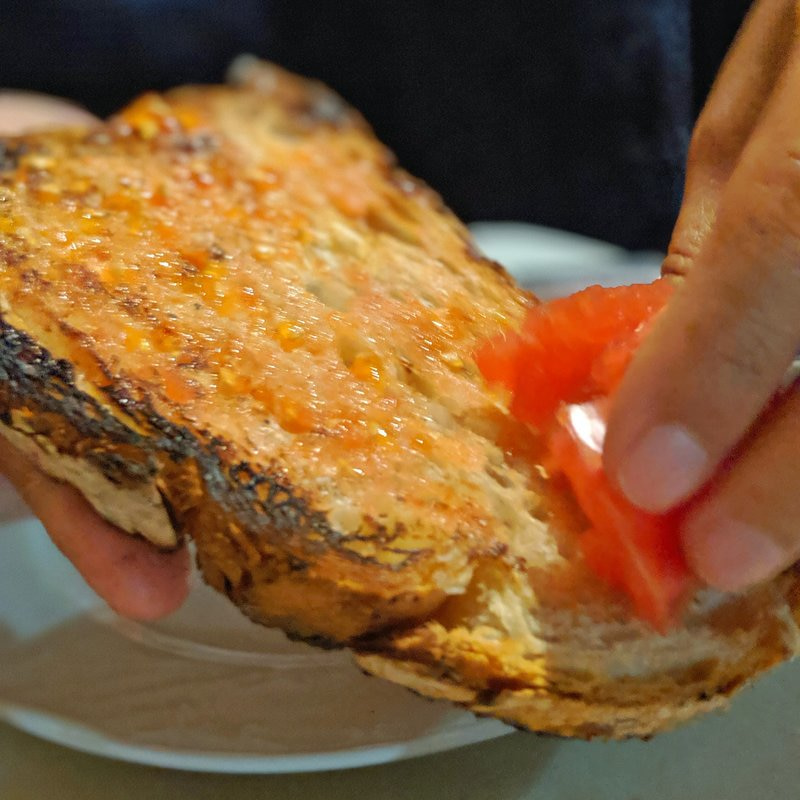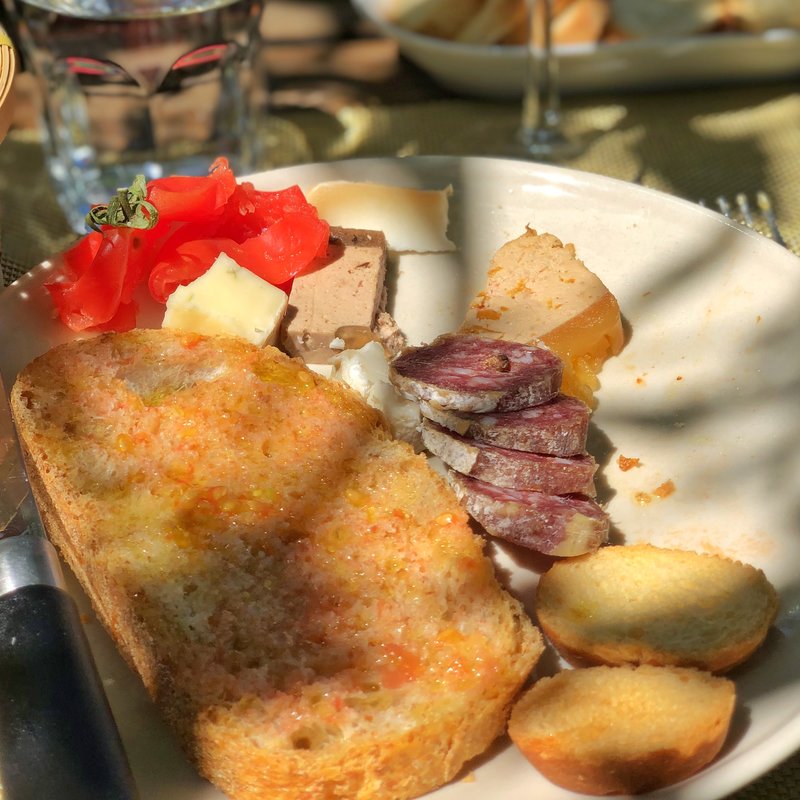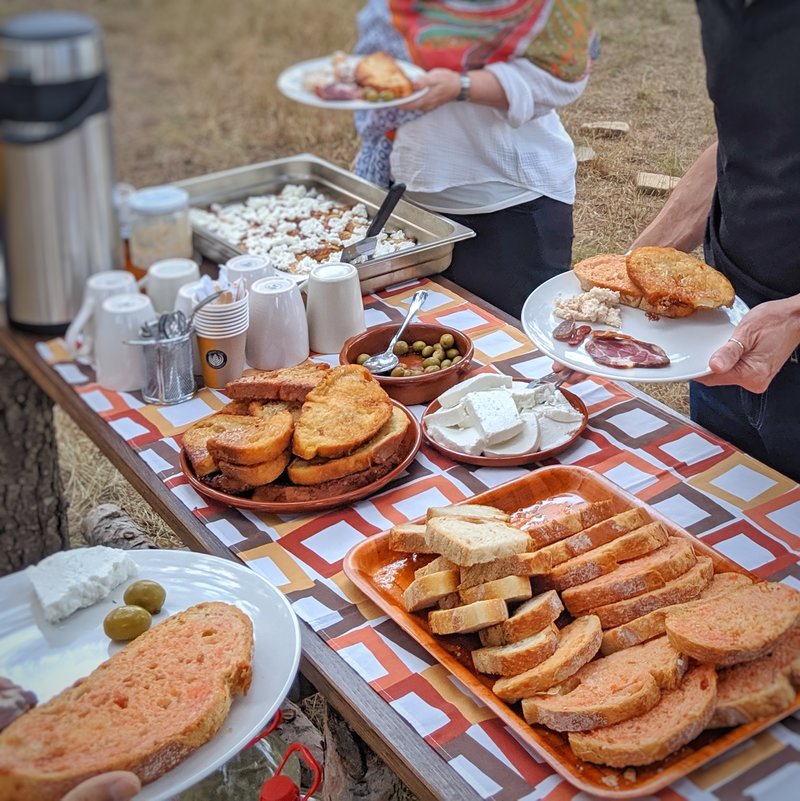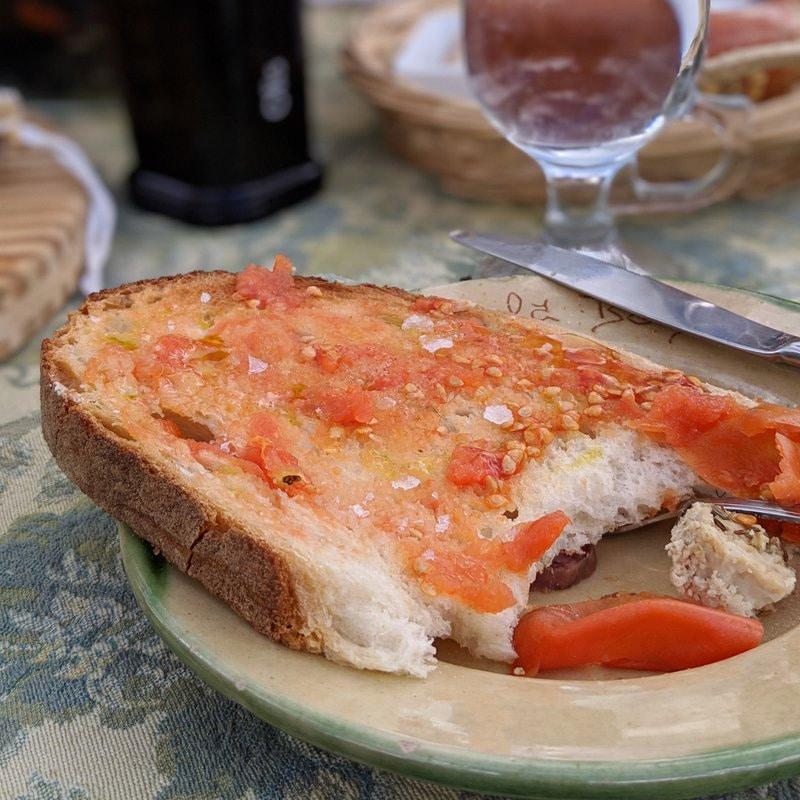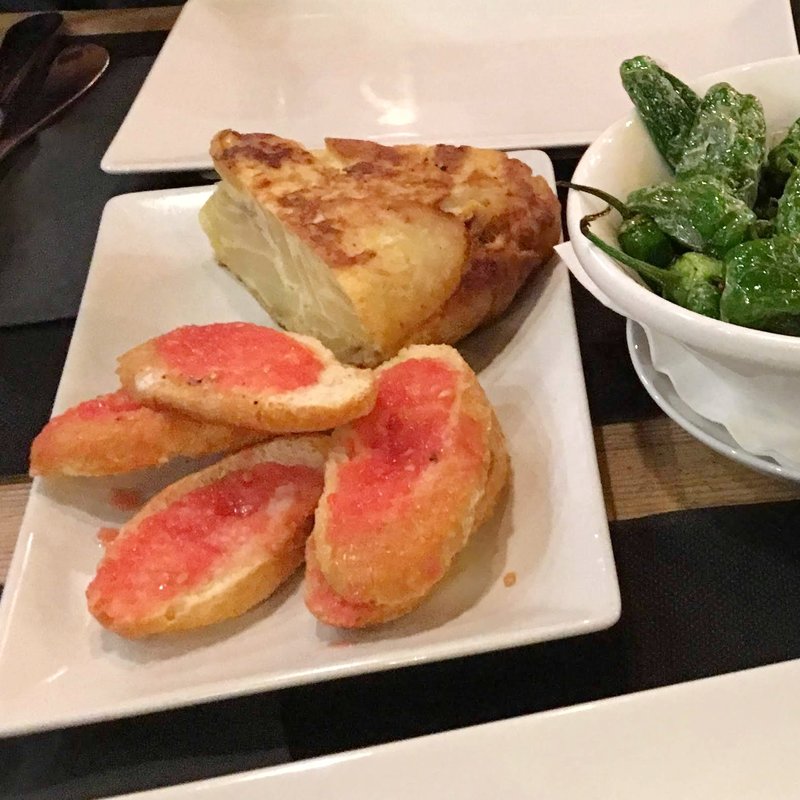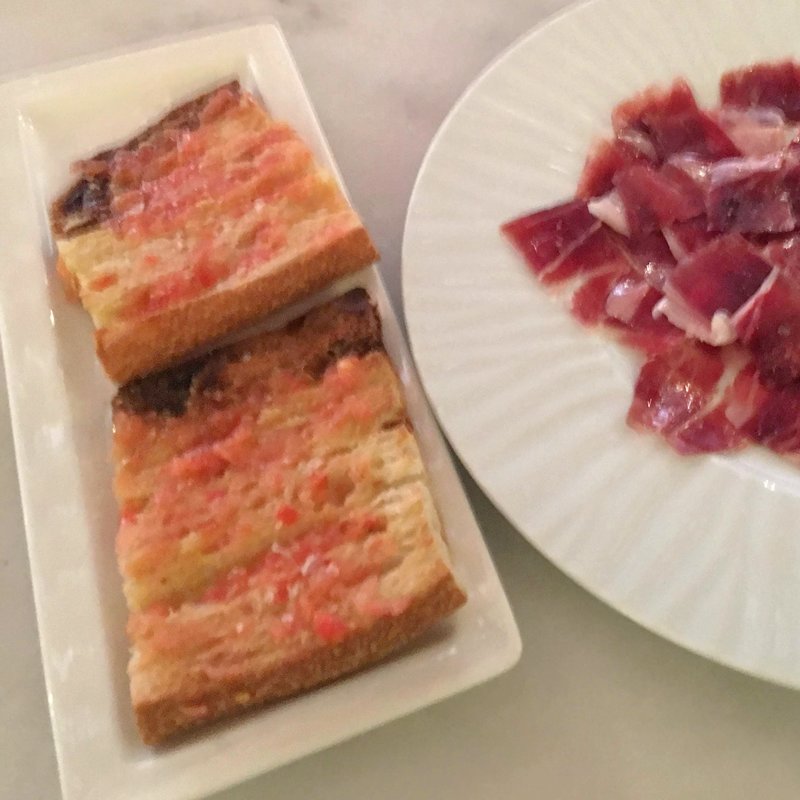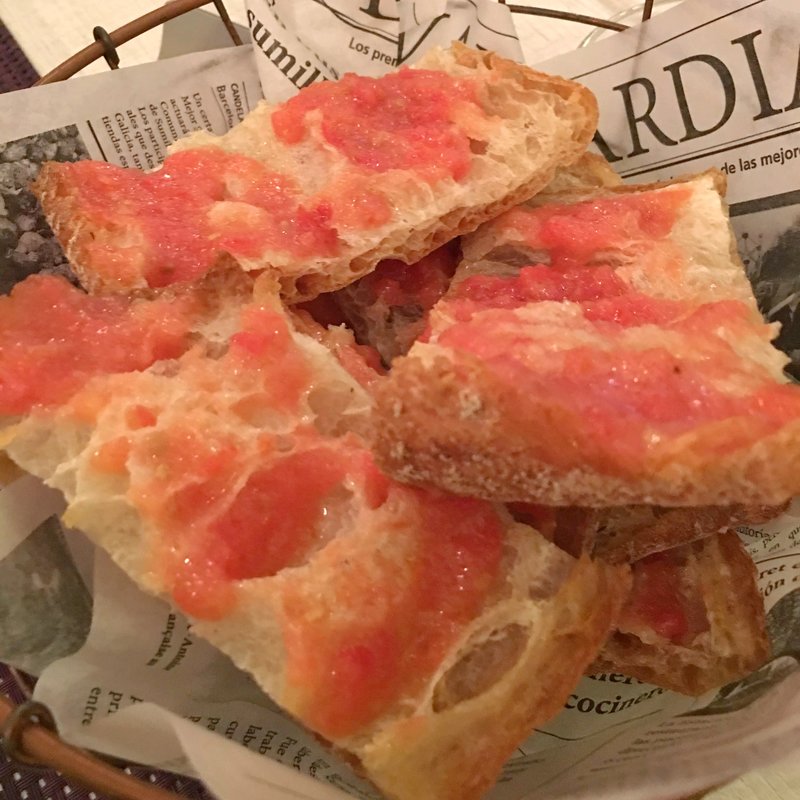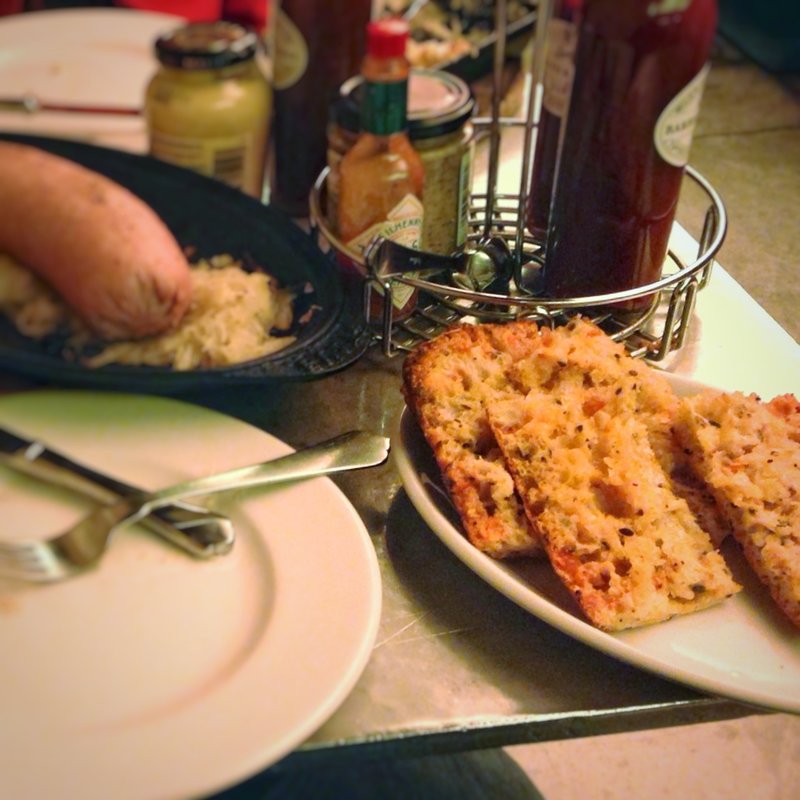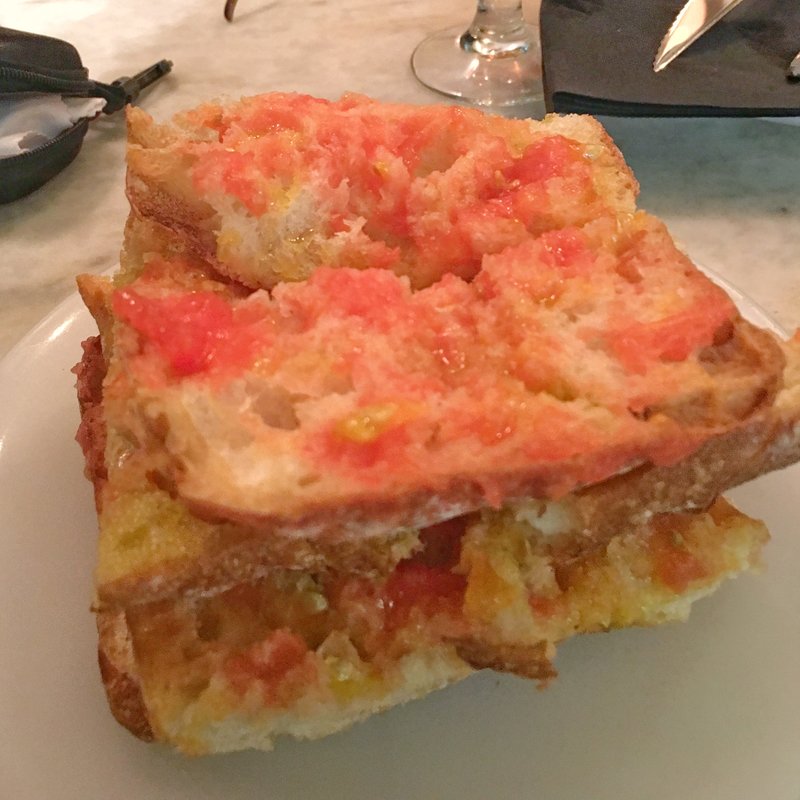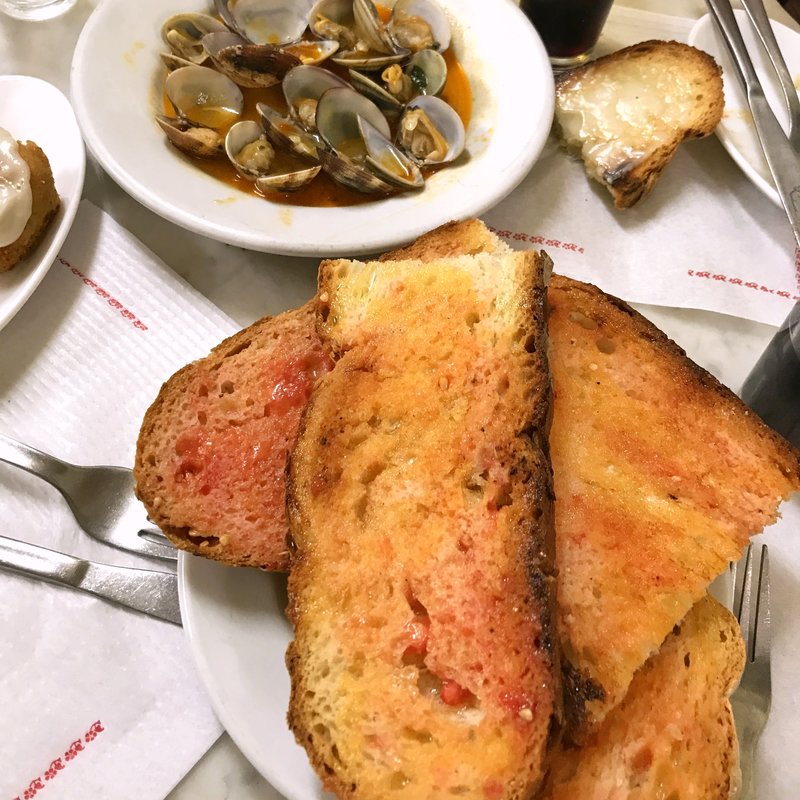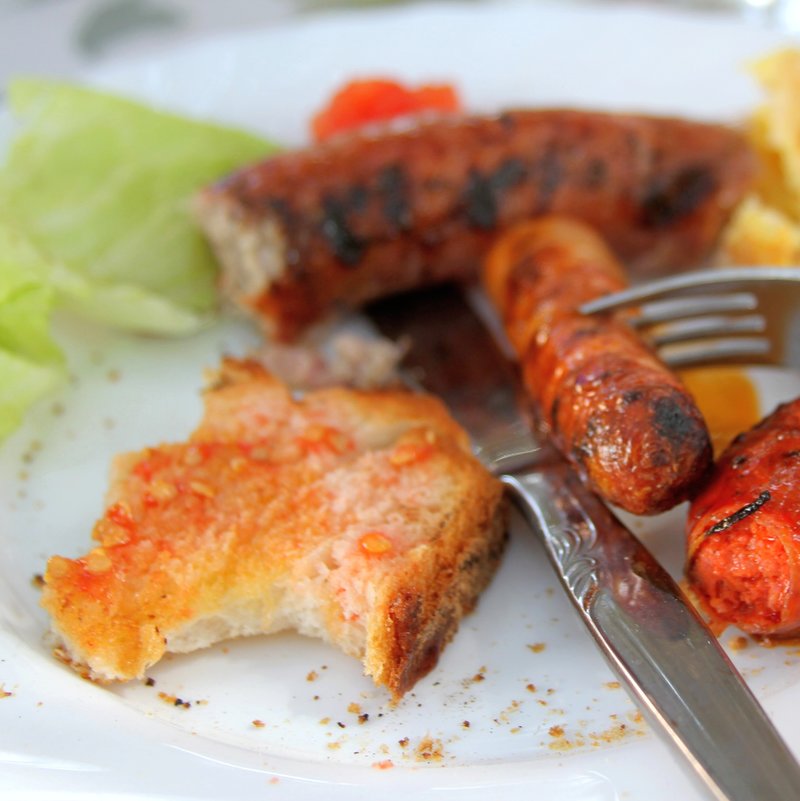We’re planning the most amazing, epic, life-changing foodie travel experiences ever! Ask me anything right here!
Why pistachios are right for pizza
You’ve heard about pizza, right? Crust. Tomato sauce. Mozzarella cheese. Maybe some pepperoni slices, and a few other random veggies and cured meats, like sausage.
And nuts.
Wait, what?
Pistachios are one of the most wonderful ingredients you could ever put on a pizza. But it has to be the right kind of pizza.
We discovered this fact at Pizzeria Bianco in Phoenix, Arizona, many years ago. That place makes a pizza called the Rosa, which has red onions, Parmigiano-Reggiano, rosemary and pistachios, drizzled with olive oil. It’s fantastic. (Picture below.)
A couple years ago, we were spending some quality time in Turin, Italy, and showed up at an extremely popular restaurant called Pizzeria Fratelli Roselli. It was a rainy day, and we were exploring the town by walking around. Normally, to get a table, you have to make a reservation weeks in advance. But they were nice and told us they had a table that wasn’t reserved for another half hour. We said we’d eat and run in 20 minutes.
One of the pizzas we ordered broke all the rules (which, of course, there are no rules in pizza — the only necessary ingredient that makes pizza pizza is the crust). This one had no sauce. It did have a thin layer of mortadella bologna on the dry crust with a huge ball of Burrata cheese on top and drizzled with olive oil. And crushed pistachios. Truly wonderful pizza.
We made pizza this week at home, using our usual sourdough crust. We made several kinds of pizza, but one had a tiny amount of sauce, mozzarella and Pecorino Romano cheeses and onions. After one bite, it was clear: This pizza really needed some pistachios. (Won’t make that mistake again!)
Why we love African safaris
We spend some amazing months in Kenya a few years ago, and one of the incredible things about that time was the safaris we did. We did safaris in Land Rovers, in jeeps, in boats and on foot. One of the life-changing aspects about these adventures is that they often go near places where amazing animals spend time, turn off the vehicle’s engine and just sit there. You get to watch animals just being themselves.
Early one morning, we got pretty close to some young cheetahs, and watched them lounge, play, run, jump into trees and just basically be cats — at unbelievable speeds. We saw the carcasses of large gazelles high up in trees, where the cheetahs somehow drag them.
Like all cats, cheetahs are killing machines. But they don’t attack humans in the wild. In fact there has never been a reported case of a human being killed by a cheetah. And the reason is interesting. While animals like lions and hyenas evolved to take down big, strong animals that can fight back, the cheetah can only kill animals whose only real defense is their speed — gazelles and other swift-moving deer. So cheetahs leave the large mammals — including people — to the lions, and specialize in chasing down ultra-fast runners.
It’s one thing to hear about all this. It’s transformative to see it with your own eyes. When the pandemic is over, we think you should definitely put an African safari on your bucket list.
Thoughts on the post-pandemic world and the future of travel
We’ve been so happy to hear from many of you and are so glad that you’re healthy and faring well under the circumstances.
It’s been about two weeks since our return from Mexico. We went from socializing and partying to social distancing and disinfecting. Quite a change. (We brought back Mexican alcohol -- a little mezcal and a lot of rubbing alcohol.)
After spending fourteen years roaming the world and returning every year to our favorite places on this beautiful planet, we find ourselves holed up in Silicon Valley, California, barely going even to the store.
Not being able to travel makes me feel trapped. But it's the price we've got to pay to help the nation cope with a lack of medical staff, tests, resources and a vaccine.
It’s normal to feel sad and worried as we witness and endure the consequences of this terrible pandemic. The devastation to small businesses, people’s livelihoods, people’s health, the economic downturn and all the deaths are beyond heartbreaking.
Luckily, we’re with our son, daughter-in-law and adorable, enchanting and endlessly entertaining granddaughter, Princess Squishyface, who manages to be cuter and funnier every day.
We’re doing our best to enjoy life in a different way.
We’ve been checking in with all our friends around the world. Their locations span the crisis spectrum, from our friends in Northern Italy, which is in the middle of an unmitigated catastrophe, to Mexico, where the real impact is still weeks into the future. We're grateful that everyone we know, personally, is OK.
(Speaking of friends around the world, these photos were sent to us by Erik, a Venetian who drives his boat for us in Venice during The Prosecco Experience. Normally, Venice is a poster child for overtourism; right now, it's deserted, the water is clearing up and the streets and canals are quiet.)
We have so much gratitude for all the healthcare workers and governments around the world working diligently to save lives and contain the spread of COVID-19. We’re grateful for everyone involved in growing, distributing and making food, despite the risks.
As we all try to adapt to life with COVID-19, it’s our sincerest hope that you are able to cope with all the sheltering in place and social distancing and any other impacts from this crisis.
The pandemic makes me realize how we have taken our way of life on this planet for granted. It’s a big lesson indeed.
But treading more lightly is long overdue. Embracing a more sustainable way to live on this planet while co-existing with each other is not only a necessity but actually something deeply rewarding.
Enjoying the simple things as well as a slow way of life are things our usually hectic and fast-paced world makes us neglect and overlook. Instead, we perform acrobatics with our schedules and make shopping an olympic sport. We find comfort on compulsive consumerism while we forget the very things that make us human and lose some of our humanity alongside.
Getting reacquainted with our kitchens and spending more quality time around the table eating, talking, playing and laughing with our loved ones are precious but almost extinct rituals that we have been forced to embrace again.
It seems that the less we have the more gratitude cultivates in our hearts. Perhaps this is the only way that this could have happened.
And now spring is upon us and there’s promise of lush greens, wild flowers with sunny warmth and the bounties of nature.
This is a great time to plant seeds or seedlings and get a vegetable garden going, or at least some potted herbs if you don’t have the luxury of a yard. I got some seeds last time we were in Oaxaca (less than a month ago!). And I just bought some organic soil so I’m all set to give this a go.
Negative events are often an opportunity to do something positive. So we’ve been cooking and baking a lot enjoying candlelight dinners and also practicing our homesteading skills -- and some dance moves!
Fermentation is something both Mike and I love. I made a ton of sauerkraut recently. Mike has baked sourdough bread every day. I fed and harvested our raw red wine vinegar and apple cider vinegar. Also, my kefir is doing well and happy to be fed on a regular basis for a change. Our son, Kevin, is making kombucha and organic beer so we’re well covered in the fermentation department.
The goal is to find the silver lining to this crisis we’re all confronted by. And when I say "all," I mean every single human being on this planet. It's hard to grasp the significance of that.
As I talk to friends all over the world, I see that they and we are similarly challenged by the same threats and effects of the coronavirus pandemic.
We’re in this together, in the broadest possible sense of the phrase. We are one global community as a human race having to rise the challenges of the most life changing event of our lifetime.
None of us are on different sides. We’re not fighting wars with each other. We're fighting this pandemic as the human race. We’re fighting one common threat to each and everyone of us.
Even as we have to observe social distancing, we’re connected more than ever before. There are no borders, boundaries or divisions between us. Our connection this time goes beyond gender, geography, social economic factors and race as well as cultural and religious differences.
We have to learn, grow, adapt and survive together because it’s literally the only way.
This will pass. One day this will be a distant memory, and hopefully, we’ll be practicing the lessons learned.
As we look back, we’ll share a bond of shared sacrifice that made us re-embrace our natural roots as human beings gathering in solidarity and joining our efforts collectively for our own survival. A time that forced us to reflect and live more sustainably for a better and stronger future -- not just as a nation but as a planet and global community.
More than ever, we need to support one another and especially those enduring serious hardship, whether they’re our loved ones, friends or other organizations and small businesses. There’s so much need out there for being good neighbors, good relatives, good friends, good citizens, good customers and good human beings. Our acts of generosity and kindness are what will make the difference in someone’s life during this crisis.
For now, we can be grateful for the time to enjoy some quiet introspection. Hopefully, we’ll come out on the other end stronger, wiser and kinder.
And we can look forward to the future when we can keep exploring the world across oceans and experience other cultures that inspire us and nourish our souls.
Life is for celebrating and travel is the most fulfilling and meaningful way to celebrate life!
-Amira
A personal note from Mike & Amira
Dear Gastronomad friends and fans,
We hope you and your family and friends are healthy and happy during these suddenly challenging times.
We’re in Mexico City where The Mexico City Experience just ended. If you've joined us on any Gastronomad Experience, you know that during Experiences time stops and all the troubles in the world are forgotten.
The coronavirus hasn't really arrived in Mexico to speak of yet, but this country is about a month behind the United States in a nationwide ban on gatherings, voluntary social distancing and runs on the stores.
So while the United States went from normalcy to extreme changes, we enjoyed a profoundly joyful and delicious week filled with parties and epic meals, cultural immersion and exploration with local Mexican food-visionary friends. On the last night (or, rather, yesterday morning) we danced until 2:30am to happy tunes of salsa, cumbia and bachata!
But it's Monday, and the party is definitely over for awhile. We'll be flying to California tomorrow for self-imposed social distancing and isolation until it's safe to emerge again.
As COVID-19 continues to be a major concern for each of us (and our friends and families), we are committed to making sure that all future Gastronomad Experience attendees will remain safe from not only the coronavirus, but all illnesses, infections and injury.
The Morocco Experience Update
Morocco has suspended all international passenger flights to and from its airports as protective measures against the coronavirus and, as such, the sold-out Morocco Experience previously scheduled for April 10 through April 23 is postponed. The Morocco Experience will be rescheduled, but we don't have new dates yet.
The Provence Experience Update
The sold-out Provence Experience June 22 through June 27 is still happening and won't be postponed unless there are travel restrictions in place close to the time of the Experience.
Thankfully, the Provence Experience is 3 months and 2 weeks away so we remain hopeful that by then, the coronavirus madness will have subsided and travel will be more or less normal.
We'll be in touch with the latest developments as the weeks go by. Best case scenario is that the coronavirus crisis passes long before the remaining Gastronomad Experiences this year and all can go ahead as planned.
Some are concerned that even after the viral crisis has abated, the airlines may still not fly. But this is extremely unlikely. The airlines need to get back to normalcy as soon as possible in order to survive as businesses, and nations need global travel to survive economically.
We apologize for the inconveniences and are deeply sorry that we're all being negatively impacted by the frenzied response to the coronavirus pandemic worldwide.
The coronavirus is quite possibly the most life-changing event of our generation. And as common sense tells us to follow the voluntary movement of social distancing, it’s important to remain committed to living life with intention and joy, whether we're traveling the world or staying at home.
Life has presented us all with a great challenge, and all we can do is rise to it. Let's do all we can to help the people most affected by this outbreak, and re-commit ourselves to health, love and compassion for those less fortunate.
We’re thinking of you and send all our love.
Amira and Mike
How to make coffee when you're packing super light
I normally buy a giant bag of Peet’s coffee whenever I’m in the US, and carry that with me when we’re abroad. I also carry my AeroPress and filters for making coffee (I don’t have the AeroPress Go yet) directly into my Yeti Rambler, which is a stainless steel insulated coffee delivery system (it’s a travel mug, basically).
Sometimes, like now, we travel super light. Most of our stuff is back at our Mexico City apartment, including the AeroPress. We’re in Oaxaca for the week, and we packed super light — only carry-on. That’s when I go into super nomad mode for coffee.
I use a portable immersion water boiler, and I boil water directly in the Yeti Rambler. Once the water is up to temperature, I pour the coffee, and the coffee brews as the grounds sink to the bottom. Boom! Coffee, with the least-possible amount of equipment for the lightest-possible packing.
The joy of making (and eating!) Mexican mole
We love mole. Especially after what we experienced on Sunday, thanks to our friend (and Mexico's chile expert, Fernando).
Wait, mole? What's the deal with mole?
Most people think of mole as profoundly and exclusively Mexican. And, of course, that's true. But it's also probably the most international foods ever created. In fact, no food represents the Columbian Exchange more than mole.
Mole is a product of Spanish colonialism. The exact origins of mole are unknown. But we do know that recipes first emerged in the early 19th Century. And the moles you find today all over Mexico contain ingredients from Mexico, Europe, Africa and Asia. The states of Puebla and Oaxaca are most closely identified with a next-level culture of mole.
Inside Mexico, the regional variations and family recipes add up to probably tens of thousands of individual varieties. The variety of moles is endless. But what they have in common is two core Mexican ingredients -- chiles and chocolate. Beyond those ingredients, most moles contain between 20 and 40 ingredients, with some containing more than 100 ingredients. These include nuts, dried fruit, seeds, cilantro, seedless grapes, plantains, garlic, onions, cinnamon, black pepper, achiote, guaje, cumin, cloves, anise, tomatoes, tomatillos, garlic, herbs and more. Some moles even contain finished foods, such as tortillas or cookies.
(Outside Mexico, you're likely to encounter a bland, one-dimensional version of mole poblano.)
Mole is usually used as a sauce for meat or tomales, and also a marinade. At Mexico City's famous Pujol restaurant, mole is served as a course -- they bring you a plate with mole on it, which you eat with a tortilla.
Because of the wide variety of moles easily available at markets, and because of the internationalization and industrialization of Mexico's food culture, the art of making mole is being lost.
That's why Fernando and his family decided to stop this loss of culture, and learn how to make mole by making mole. Once they master the art of traditional mole making, they plan to teach others how to do it.
(Fernando's family owns a market called La Flor de Jamaica. And Fernando teaches our Gastronomad Experience guests all about chiles and salsa. He's also dedicated his life's work to preserving the knowledge, culture and botanical diversity of chiles and other Mexican food plants. That's Fernando pictured below wearing the giant hat.)
On Sunday, Fernando and his family (and we) all got together to make mole and other delicious foods completely from scratch using traditional methods over wood fires. This process of experiential learning was lorded over by an older woman who had learn from her mother and grandmother, and also a professional cook.
Most of the mole ingredients were toasted over a wood fire on a comal, then ground with a large flat volcanic-rock grinding stone called a metate and a hand-held stone called a metlapil.
This turned out to be a wonderful, slow, relaxing way to spend a beautiful Sunday in a small town in the state of Mexico, just South of Mexico City.
We basically ate all day, took turns grinding mole ingredients, hung out, chatted and ended up having a mind-blowingly fantastic mole chicken dinner.
We are so lucky to have a friend like Fernando, who generously invited us to participate in this day with his wonderful family. And Mexico is lucky to have a man like Fernando working so hard to preserve the nation’s unparalleled gastronomic culture.
Picturing the Picture-Perfect Prosecco Experience!
You owe it to yourself to explore with us the beauty and wine and gastronomy of The Prosecco Experience. We still have room for our May and September Prosecco Experiences.
San Salvador: North America's coolest undiscovered metropolis
Everyone should live in San Salvador, at least for awhile. As the gigantic old capital of El Salvador — 1.5 million people larger than San Francisco and a century older than New York — San Salvador is a major and historic city.
We spent nearly a week there straddling New Year’s Eve, staying in a brand-new condominium with a stunning view (the picture was taken out of our living room window).
It made us wonder why more Americans don’t visit San Salvador. The answer is probably crime, poverty, earthquakes and volcanoes, all of which are active in San Salvador, but none of which is likely to affect you.
San Salvador is in many ways like any other city — there are Starbucks, hipster cafes and Crossfit gyms popping up everywhere. But unlike many cities, San Salvador has clean air, friendly people and a very rustic countryside always minutes away.
The weather is amazing. It reaches a high in the mid to high 80s every day, all year. The only different in weather is that sometimes it’s very rainy. Other times its very windy. But it’s always pretty warm during the day.
The best thing, of course, is the food. Salvadoran food is incredible, and incredible food is everywhere.
In any event, one week was too short. So we’re trying to figure out how we can stay in San Salvador for a lot longer next time.
The joy of Salvadoran seafood
When I was a kid, my grandfather owned a house on the beach in Ensenada, Mexico. We occasionally drove down to hang out there. En route, we always stopped at a cheap and extremely casual lobster restaurant at the top of a cliff in Rosarito, just south of Tijuana. Once at the beach house, we spent our days and evenings doing a lot of nothing, but on the beach. My dad and grandfather would hunt quail and surf-fish, so our food was typically wild and local. Back in those days, there was hardly anyone on the beach, so we had this big wide California beach mostly to ourselves. Nearby, we could rent a horse for a $1.50 for the day, which we could ride on the beach and even in the shallow surf. We bought fireworks in Tijuana en route — explosives that would and should have been illegal in the US, and so we spent our unsupervised nights on the beach blowing shit up.
These precious Mexican days were languid and sunburned and sandy and delicious.
These memories triggered special joy at our recent time in El Salvador in late December.
Amira was born in El Salvador; still has family there. So Amira and her family, her brother and his family, plus a smattering of cousins, aunts, uncles, nieces and nephews all got a huge beach house for a week on the beach in El Salvador’s Costa Del Sol.
It reminded me so much of my childhood trips to Mexico. The house in El Salvador was much nicer, and the food much better, but the general feeling of doing nothing on a mostly deserted beach all day, living on local seafood and exploding ordinance at night was very similar.
This time, I’m the grandfather. And it was a joy to see my granddaughter playing in the surf and enjoying the freedom and fun of beach-house holidays.
Amira’s Aunt Reina loves to cook, and she’s super good at it, and prepared massive pots of food for us over a wood fire — locally provisioned crab, lobster, fish, hand-made tortillas and pupusas and other goodies. Outside the Big City, foods like this are purchased directly from the producers or fishermen. They catch it and sell it. We buy it and cook it. The directness of this supply chain makes it all taste better somehow.
Here's what Gastronomad Experiences feel like!
CLICK HERE to peek inside the world of Gastronomad Experiences!
We ate these amazing vegan street tacos in Mexico City
Amira and I don’t often eat street food, even in Mexico, but made an exception for these two amazing places. As expected, they were both cheap, delicious and fast. Listen to the Mike Elgan Radio podcast to hear our detailed comments, which we recorded on the streets walking home after eating at these places. (Go to the 28 minute mark to hear just the taco part, and go here to subscribe to the podcast.)
Still happily glowing from The Mexico City Experience
We just concluded our Mexico City Experience Sunday. OMG, what a wonderful and mind-blowing week it was!
Every Experience is different, and this one was unlike any past Mexico City Experience and also unlike any future one.
We began during Día de Muertos and celebrated along with the rest of Mexico City with traditional face painting, ofrenda, Mexican delicacies made on a comal over a wood fire, Mexican chocolate from cacao bean to cup. We enjoyed authentic Mexican fun at our friend’s beautiful house in the San Angel neighborhood of Mexico City. So much fun!
Mexico City astonishes at every turn. The exquisite food, exotic drinks (tomato pulque was just one of many rare beverages that delighted our palates) and incredible tastings of wine from all the wine-making regions of Mexico. Of course, we dove deep during exquisite mezcal and tequila tastings. We got to enjoy some very special bottles not available to the public, which another friend generously made possible.
The funnest part is that we surprise our Gastronomads at every turn. They never know what we're going to do until we're doing it.
It was an extraordinary week filled with profound joy and continuous laughter that nourish my soul and fills my heart with enormous gratitude.
Our local Mexican friends and visionary food artisans are remarkable and inspiring people whom Mike and I love. We are grateful for their passion and friendship. We’re very lucky to have them in our lives.
My favorite quotes of the week from our new friends: “It was beyond expectation,” “life-changing,” and “I will be looking into next year when I get home so you shall hear from me soon.” Music to my ears!
We'll be staying in Mexico City, with a brief trip to Guadalajara, and we'll head back to California for awhile to visit family. Then it's back to Mexico City for the unique December Mexico City Experience. (We still have one room left and, if I'm honest, you'd be nuts to miss it!) -Amira
Having mind-blowingly great tacos right now in Mexico City
This incredible taco from a little-known hipster joint called Chetito in the Roma neighborhood contains shrimp, cheese, avocado, crunchy tortilla strips and spicy sauce of some kind. So delicious. It starts out tasting mild, but by the end your mouth is pleasantly burning.
We discovered a brand-new restaurant in Mexico City
This new restaurant in Mexico City is pushing the envelope with ingredient innovation and also preserving ancient Mexican (mostly Oaxacan) traditions. You can hear all about it — and our interview with the chef — by listening to the Mike Elgan Radio podcast below, or subscribing here.
Kefalonia dreamin'
Waking up to the sound of rain and light thunder after our first night in Kefalonia was wonderfully relaxing. (We got to turn off our fake rain sound app for a change). And the rest of the week we had nothing but perfect warm weather with blue skies and white puffy clouds.
Kefalonia airport is pretty old-school -- tiny and quaint, with one tiny baggage claim belt. It really feels like it’s from another era. Right after our flight landed, Tony, Mike and I walked on the tarmac to the small arrival area. We collected our suitcases and headed a few steps to the exit where we were greeted by our AirBnB host, who graciously offered to pick us up. He gave us a quick tour of the center of the island's main town of Argostoli, and we all instantly fell in love with the island.
We booked a cheap flight to Kefalonia and the lodging just one day before. Having no idea what awaited us before we boarded our flight, we were pleasantly surprised to discover the magnificent beauty of the island from the sky as the flight descended with the sun setting. Our propeller engine plane landed and it felt like we had landed on Fantasy Island.
Discovering this delightful island was purely by chance -- serendipity at its finest.
After dropping off our suitcases at the nice three-bedroom house we rented, we headed for a walk to check out the town. There are many restaurants, bars and taverns along the shore with breathtaking views.
We played "restaurant roulette" (where you order one item, order more if it's good and go to another restaurant if it's not) and ate at two restaurants the first night. The food was delicious.
We’ve been trying other restaurants every day and, with the exception of one, all have served us good food. There are also wineries on the island specializing on a local varietal called robola. And, of course, many beautiful beaches and hidden coves with spectacular scenery.
Kefalonia is still a fairly undiscovered island in the Ionian sea. I suspect it will become a more well-known destination soon, as a new airport is being built right next door to the current one.
Even in late September, the weather was still warm with some humidity and a gentle breeze. It all felt glorious. Mike enjoyed swimming in the warm mediterranean water. And we even enjoyed these amazing house-made strawberry ice cream popsicles.
So if you visit Greece, don't miss out on Kefalonia, an under-rated gem of an island.
Three restaurants in Crete we loved
Peskeci is in Heraklion. It’s a farm-to-table restaurant (they have their own farm). The food was quite good based on very high-quality ingredients. Their bread could be better but I was happy it was served with organic olive oil from their farm.
Domenico is a small tavern owned and run by our new friend George who goes by the nickname of Smoothie. He’s is smooth indeed. His charming personality and the simple but well-prepared dishes made by his wife are definitely worth the visit. The food was fresh and delicious. And the desserts were good. I especially enjoyed the homemade ice cream made with sheep milk.
We also enjoyed a delightful lunch at a restaurant right on the beach, called Dolphin. To our delight, the food was great and, of course, it was fabulous sitting at a table on the beach enjoying stunning views of the Mediterranean with the hill perched town in the background.
Eating great baklava in Athens
I ate nearly all of this delicious baklava today in the Monastiraki district of Athens, along with a double Greek coffee. So delicious.
A love letter to "pan con tomate"
Bread rubbed with a half tomato, drizzled with olive oil and topped with salt.
So simple. So healthy. So delicious. And so Catalonian.
It's called "pan con tomate" (that's "pa amb tomàquet" in Catalan and "bread with tomato" in English).
We eat it almost every day when we're in Barcelona or the Catalonian countryside. It's the first thing we order in Spanish restaurants -- before we even look at the menu or wine list. And it’s a staple of our Barcelona Experience.
"Pan con tomate" is very similar or even identical in ingredients to the Italian antipasto bruschetta. The difference is one of tone and feel. While Bruschetta is typically prepared in a kitchen and served occasionally, "pan con tomate" is far more casual and everyday, usually prepared at the table by the person eating it.
Bruschetta is harder to eat, because a large quantity of diced tomatoes tend to be precariously perched on top of narrow slices of bread. I often lose a few cubes of tomato when I eat bruschetta.
"Pan con tomate" is easier to eat, because the ingredients are kind of mashed into and drizzled onto what is usually a larger slice of bread, rather than heaped on top.
And Catalonians eat "pan con tomate" far more often than Italians eat bruschetta. For example, in Catalonia, "pan con tomate" is happily consumed for breakfast, lunch and/or dinner.
Both "pan con tomate" and bruschetta almost certainly emerged sometime in the 17th or early 18th century after Europeans started incorporating Mexican tomatoes into their diets. (The Europeans got domesticated tomatoes from the Aztecs, who got it from the Mayans, who got it from pre-historic South Americans.) The first written recipe for "pan con tomate" that we know of was published in 1884. The use of toasted bread with garlic and olive oil in Europe no doubt pre-dates the Romans -- the Spanish and Italians just started adding tomato to something they were already eating.
The standard way to eat "pan con tomate" is to use a kind of baguette-shaped bread, sliced and brought to the table with whole tomatoes, olive oil and salt. You slice a tomato in half, then rub it on the bread or toast while squeezing it a bit. Then you drizzle olive oil on top and sprinkle salt.
The best way to make "pan con tomate" (i.e. the way Amira makes it) is to use ancient-grain, naturally leavened bread toasted over a wood fire, rubbed with tomato and drizzled with a pressed-garlic infused olive oil and topped with seasalt.
Garlic is a common but not necessary ingredient in Catalonian "pan con tomate," where it is rubbed on the bread before the tomato either in raw or roasted form.
The whole point of "pan con tomate" is extreme compatibility with Catalonian life. It uses ingredients always on hand. And it's a way to avoid wasting old bread. You can easily compensate for the dryness of the bread with the amount of tomato and olive oil you put on.
"Pan con tomate" is super flexible. You can put cheese on top, or -- my favorite -- jamón ibérico. You can and should eat it with tortilla, which is what Spaniards call a potato omelette ("tortilla española" or "tortilla de patatas").
In fact, "pan con tomate" pairs perfectly with all the Catalonian things -- cava, ham, cheese, stews, seafood, sausages and more. It's Catalonian, of course, but also gloriously Mediterranean.
I love bread. And I'm very gluten tolerant. But "pan con tomate" is easily the healthiest way to eat bread. The tomatoes, garlic and olive oil are extremely good for you.
And "pan con tomate" is charming, too, because it highlights and showcases the work of the farmer -- the quality of the tomatoes and olive oil, plus the quality of the bread, dictate the quality of the "pan con tomate."
In my experience, "pan con tomate" tastes best with family and friends in the shade of an olive tree or grape vines on a breezy late-summer afternoon while gazing across Xare-lo vineyards with Montserrat on the horizon. But it's also delicious everywhere you can get your hands on good bread, tomatoes and olive oil.
You should eat "pan con tomate." -Mike
Tasting French cheese in Spain
We enjoyed this incredible Valençay cheese during The Barcelona Experience, which ended yesterday. It was one of 20 cheese we tasted during this tasting, which itself was one of several cheese tastings.
Wait, you say, isn't that a French cheese?
The answer is: yes. Catalona, which borders France, is one of the best places in Spain to find French cheese. (We also tasted lots of Spanish cheeses, and a few other French and Swiss cheeses.) Valençay is from the Loire Valley.
Valençay is made from raw goat milk, and is covered with grey ash.
It looks like a very strong cheese, but it's surprisingly mild. I think this is my favorite cheese in the world right now.





